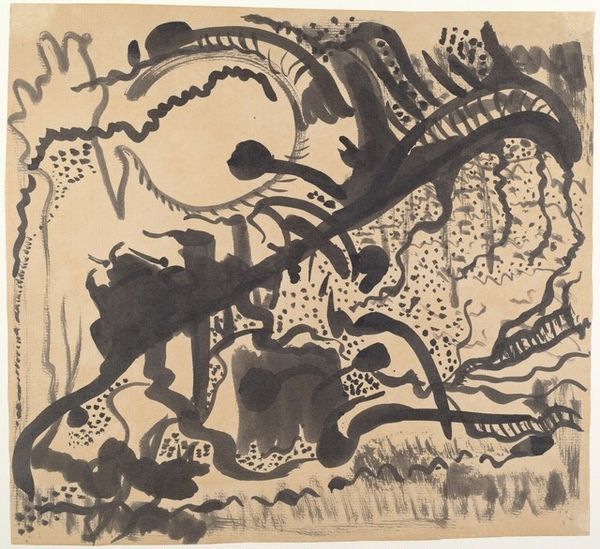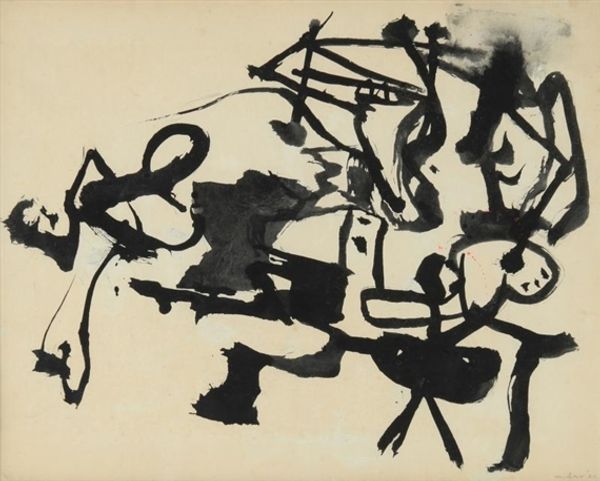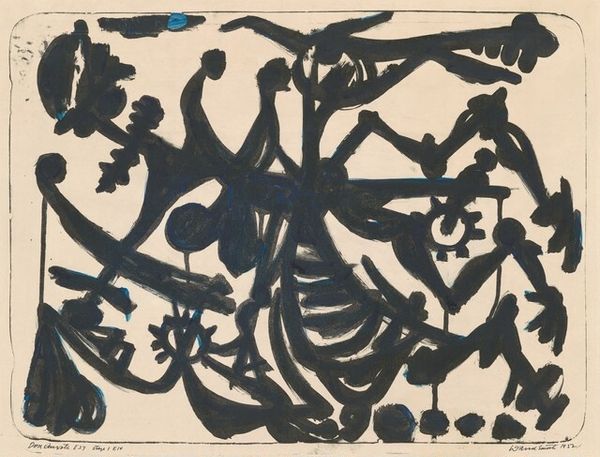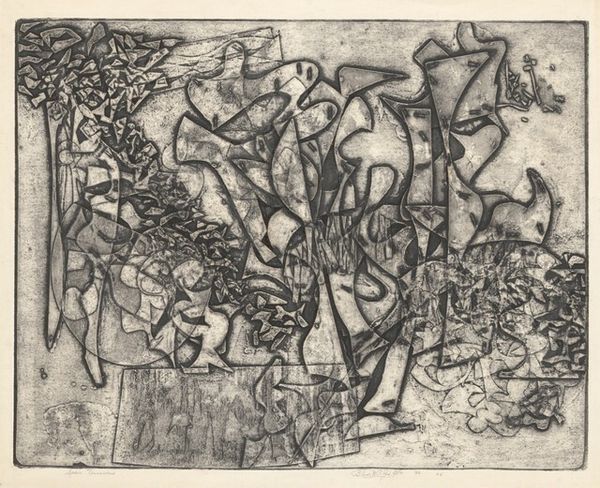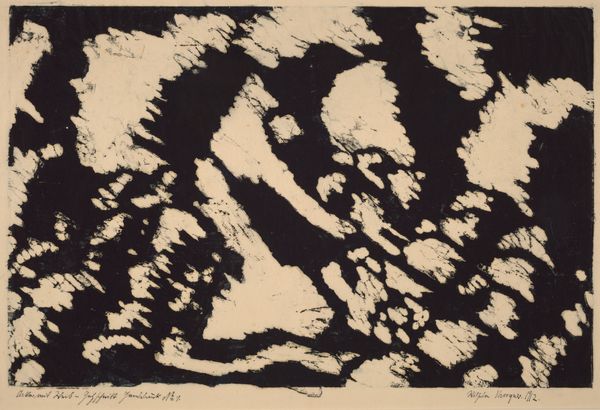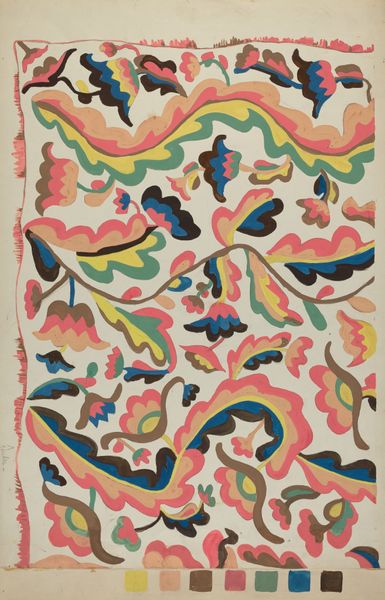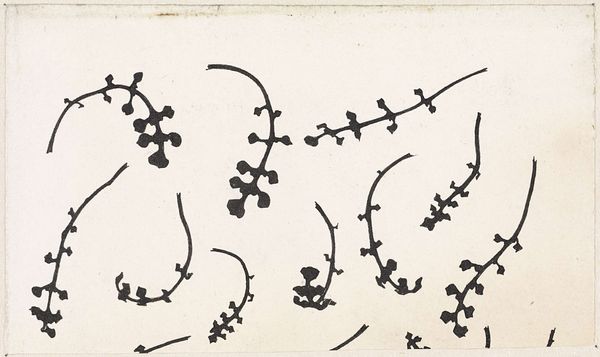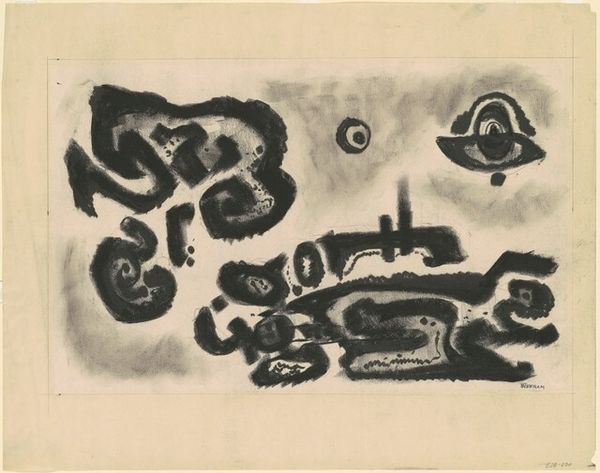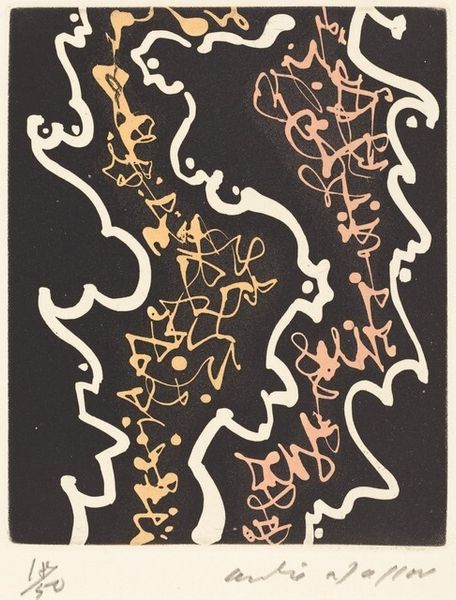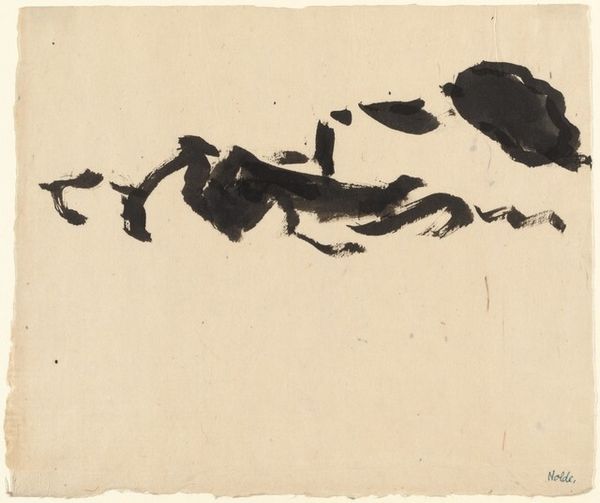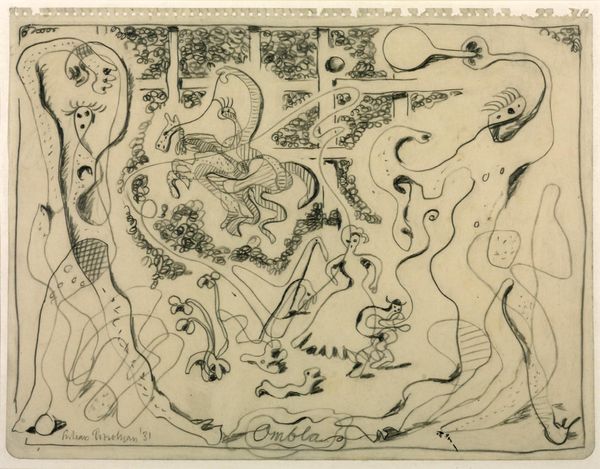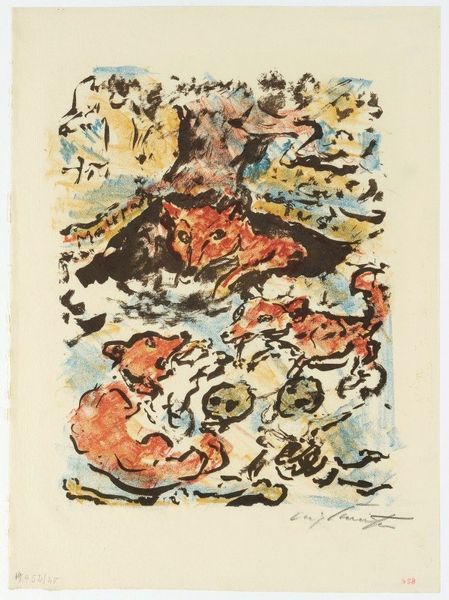
drawing, oil-paint
#
abstract-expressionism
#
drawing
#
non-objective-art
#
oil-paint
#
matter-painting
#
abstraction
#
line
Dimensions: sheet: 63.18 × 99.06 cm (24 7/8 × 39 in.) mount (lined): 66.36 × 102.24 cm (26 1/8 × 40 1/4 in.)
Copyright: National Gallery of Art: CC0 1.0
Curator: We are looking at a work on paper from 1951 by Jackson Pollock, known only as "Untitled." He's used oil paint here to create what can only be described as pure abstraction. Editor: Immediately, the earth tones strike me. It's an interesting tension; the black reads as heavy, oppressive almost, whereas the rusty red brings a weird organic quality. It’s raw, primal. Curator: Right, and let's consider Pollock's practice. His drip technique, executed on the floor, challenges traditional notions of easel painting. This method allows him to engage with the canvas in a truly physical way. In the cultural milieu of post-war America, his style really stood for a distinctly American avant-garde. Editor: The scale amplifies that physical presence. Though not a massive canvas, the density of marks creates a sort of chaotic landscape. It’s definitely aggressive but is it liberating or entrapping? Perhaps both? This feels like a visualization of pure id. Curator: Yes! I think there's something deeply rebellious in Pollock’s rejection of figurative art. Post-war anxieties, Cold War tensions…abstraction allowed artists to engage with profound issues without resorting to propaganda or overt representation. Consider Clement Greenberg’s championing of Pollock. He believed abstract art was the path to an art purged of social and political meaning, focused on the essential elements of painting itself. But the social seeps in anyway, right? Editor: Absolutely. Though it's "non-objective," the work inevitably participates in political and gendered discourse by implicitly resisting conservative representation. The male artist embodying radical creative freedom resonates for better or worse with that specific historical moment, a sort of heroic individualism that we need to deconstruct and re-evaluate today. Curator: Precisely. The image itself can be detached from his person and exist in new spaces that highlight other elements of the context or visual strategies deployed by the artwork. What do we gain when we look beyond just the myth of Pollock? Editor: Looking with a contemporary gaze, the all-over composition and the rejection of traditional form can perhaps resonate with questions about hierarchical thinking, decentering of narratives. Curator: This brief look brings forward the exciting relationship between intention, production and perception across the artwork's life! Editor: Indeed, let's leave it here for the listener to now ruminate and come up with their own interpretation.
Comments
No comments
Be the first to comment and join the conversation on the ultimate creative platform.
